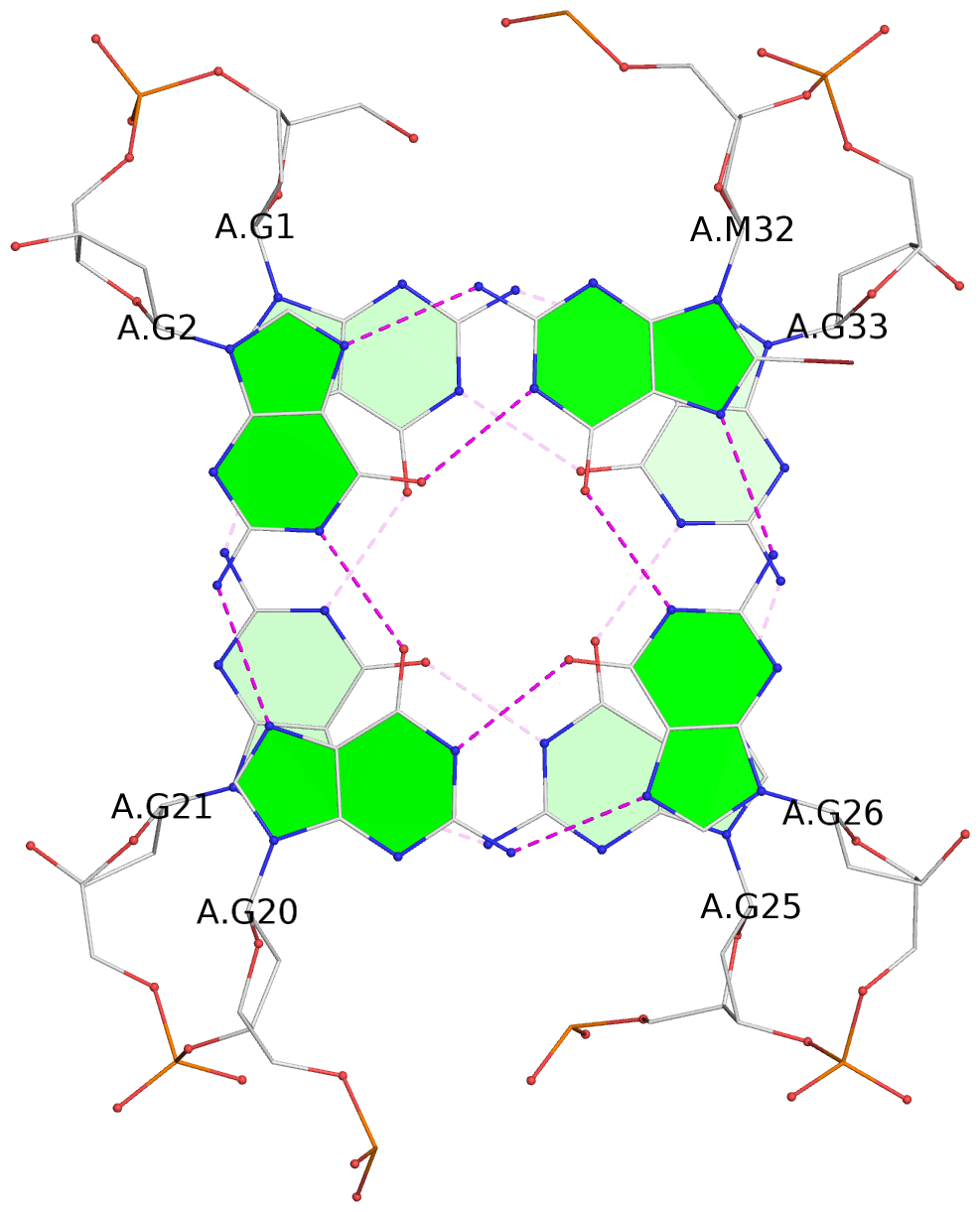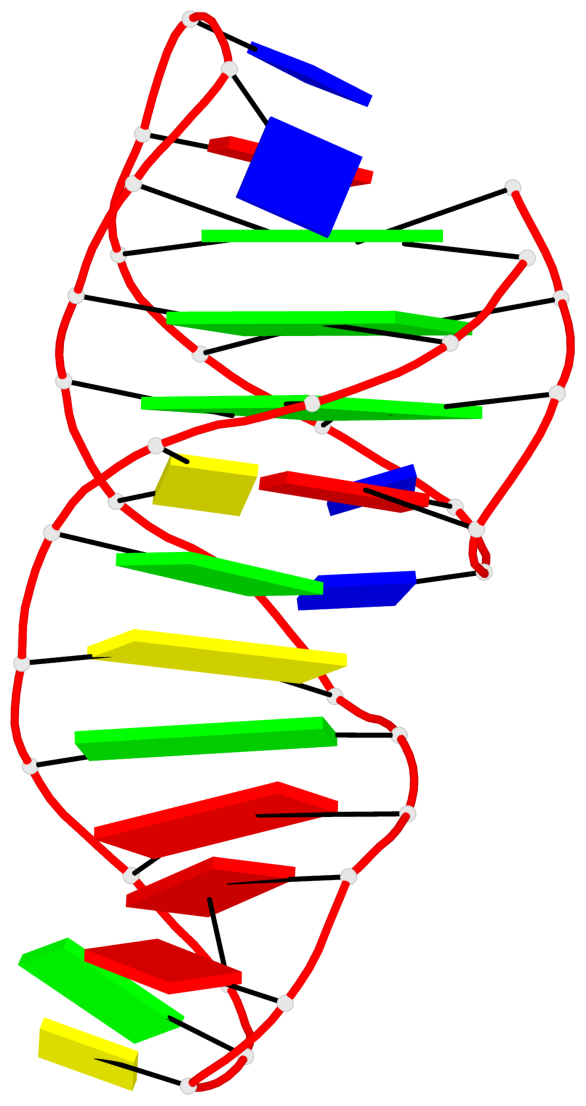Detailed DSSR results for the G-quadruplex: PDB entry 8r6g
Created and maintained by Xiang-Jun Lu <xiangjun@x3dna.org>
Citation: Please cite the NAR'20 DSSR-PyMOL schematics paper and/or the NAR'15 DSSR method paper.
Summary information
- PDB id
- 8r6g
- Class
- DNA
- Method
- NMR
- Summary
- A quadruplex-duplex hybrid with a three-layered chair g-quadruplex topology
- Reference
- Vianney YM, Dierks D, Weisz K (2024): "Structural Differences at Quadruplex-Duplex Interfaces Enable Ligand-Induced Topological Transitions." Adv Sci, e2309891. doi: 10.1002/advs.202309891.
- Abstract
- Quadruplex-duplex (QD) junctions, which represent unique structural motifs of both biological and technological significance, have been shown to constitute high-affinity binding sites for various ligands. A QD hybrid construct based on a human telomeric sequence, which harbors a duplex stem-loop in place of a short lateral loop, is structurally characterized by NMR. It folds into two major species with a (3+1) hybrid and a chair-type (2+2) antiparallel quadruplex domain coexisting in a K+ buffer solution. The antiparallel species is stabilized by an unusual capping structure involving a thymine and protonated adenine base AH+ of the lateral loop facing the hairpin duplex to form a T·AH+ ·G·C quartet with the interfacial G·C base pair at neutral pH. Addition and binding of Phen-DC3 to the QD hybrid mixture by its partial intercalation at corresponding QD junctions leads to a topological transition with exclusive formation of the (3+1) hybrid fold. In agreement with the available experimental data, such an unprecedented discrimination of QD junctions by a ligand can be rationalized following an induced fit mechanism.
- G4 notes
- 3 G-tetrads, 1 G4 helix, 1 G4 stem, 3(-Lw-Ln-Lw), chair(2+2), UDUD
List of 3 G-tetrads
1 glyco-bond=s-s- sugar=---- groove=wnwn planarity=0.418 type=bowl-2 nts=4 GGGG A.DG1,A.DG21,A.DG25,A.DG33 2 glyco-bond=-s-s sugar=---- groove=wnwn planarity=0.309 type=saddle nts=4 GGGg A.DG2,A.DG20,A.DG26,A.BGM32 3 glyco-bond=-s-s sugar=---- groove=wnwn planarity=0.243 type=other nts=4 GGGG A.DG3,A.DG19,A.DG27,A.DG31
List of 1 G4-helix
In DSSR, a G4-helix is defined by stacking interactions of G-tetrads, regardless of backbone connectivity, and may contain more than one G4-stem.
Helix#1, 3 G-tetrad layers, INTRA-molecular, with 1 stem
List of 1 G4-stem
In DSSR, a G4-stem is defined as a G4-helix with backbone connectivity. Bulges are also allowed along each of the four strands.



